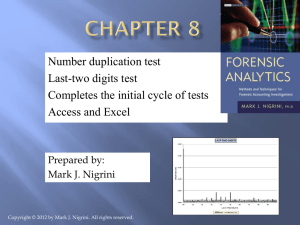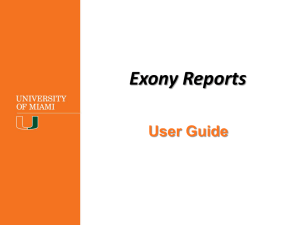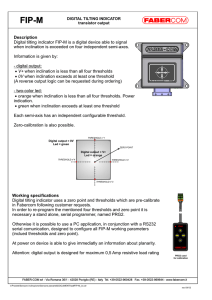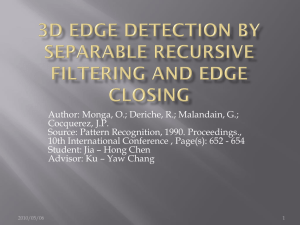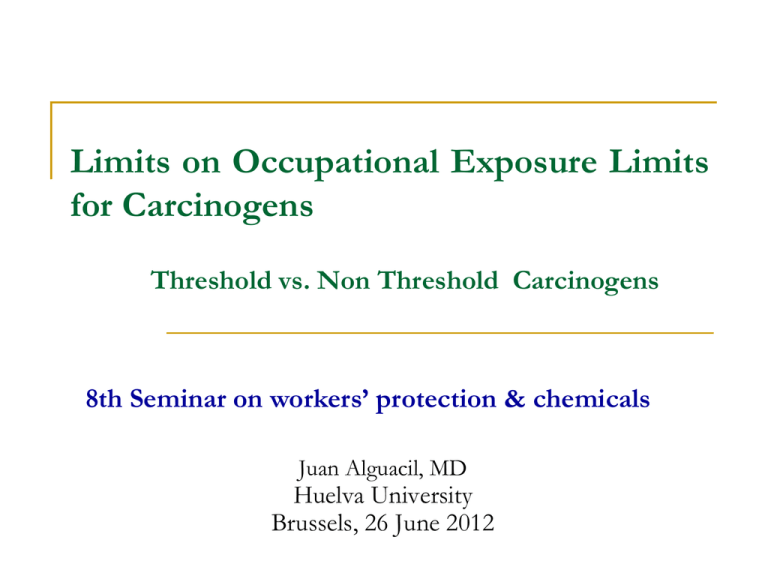
Limits on Occupational Exposure Limits
for Carcinogens
Threshold vs. Non Threshold Carcinogens
8th Seminar on workers’ protection & chemicals
Juan Alguacil, MD
Huelva University
Brussels, 26 June 2012
OUTLINE
Cancer is a chronic disease where cumulated long
term exposure is relevant, and 8-hour thresholds do
not account for chronic exposure
Update of the documental basis can be improved
Most thresholds are not based on studies in humans
(epidemiological or toxicological)
Thresholds, concomitant exposures and mixtures
Chemicals with multiple mechanisms of action
Validity of inferences for low-dose effects and
accuracy of NOAELs
OUTLINE
Cancer is a chronic disease where cumulated long
term exposure is relevant, and 8-hour thresholds do
not account for chronic exposure
Update of the documental basis can be improved
Most thresholds are not based on studies in humans
(epidemiological or toxicological)
Thresholds, concomitant exposures and mixtures
Chemicals with multiple mechanisms of action
Validity of inferences for low-dose effects and
accuracy of NOAELs
Comparison of Toenails and Urine as
Matrices for Bio-Monitoring of Metal
Levels in Exposed Workers
Dr. Juan Alguacil Ojeda
Huelva University
STUDY POPULATION
TABLE 1: Main Characteristics
Metal workers
Service workers
n=56
%
n=38
%
Study Area
Huelva
Cadis
Seville
37
18
1
66.1%
32.1%
1.8%
38
-
100%
-
Sex
Women
5
8.9%
7
18.4%
Age
Mean
SD
44
10
48
6
RESULTS
Metals among exposed vs. unexposed workers
Urine
Al
As
Ba
Be
Cd
Co
Cr
Cu
Fe
Hg
Li
0.131
0.552
0.130
0.970
0.682
0.556
0.512
<0,001
Exposed
Higher than
Unexposed
NO
YES
NO
YES
YES
YES
YES
YES
U Mann-Whitney test for medians
Exposed
Higher than
Toenails Unexposed
0.001
<0,001
<0,001
<0,001
<0,001
0.001
<0,001
<0,001
0.001
0.007
0.001
NO
YES
YES
NO
YES
YES
YES
YES
YES
YES
YES
RESULTS
Metals among exposed vs. unexposed workers
Urine
Mn
Mo
Ni
Pb
Se
Sr
Tl
U
V
W
Zn
0.556
<0,001
0.796
0.563
0.001
<0,001
0.454
0.620
Exposed
Higher than
Unexposed
YES
YES
YES
YES
YES
YES
YES
YES
U Mann-Whitney test for medians
Exposed
Higher than
Toenails Unexposed
0.003
0.001
0.189
<0,001
<0,001
<0,001
<0,001
0.001
<0,001
<0,001
0.201
YES
YES
YES
YES
YES
YES
YES
YES
YES
YES
YES
RESULTS
Unexposed
workers
Exposed
workers
All
togheter
n=42
n=60
n=102
rho
p
rho
p
rho
p
As
0.03
0.852
0.428
0.001
0.224
0.024
Li
0.034
0.829
0.283
0.030
0.274
0.006
Pb
0.039
0.804
0.555
<0.001
0.483
<0.001
Tl
-0.065
0.685
0.221
0.089
0.288
0.003
V
-0.070
0.660
0.215
0.098
0.33
0.001
W
0.111
0.514
0.267
0.039
0.178
0.081
Cd
0.257
0.100
-0.017
0.898
0.066
0.511
Hg
0.284
0.069
-0.204
0.118
-0.076
0.449
CONCLUSION
Multielemental analysis of toenail samples
properly captures occupational exposure to
metals, and might be useful when long term biomonitoring be of interest
CUMULATIVE EXPOSURE
8-hours based exposure limits account for the acute
effect of a dose that takes into account a correction
factor for a life-long term occupational exposure, but do
not account for the chronic (continuous) effect of the
cumulative exposure
Noise is a good example (though not carcinogenic)
Need for studies based in humans (e.g. cohorts of
workers, environmentally exposed populations) to
assess the risk of cumulative exposure
Known carcinogenic agents increasing the risk at chronic
environmental exposure are candidates to follow
OUTLINE
Cancer is a chronic disease where cumulated long
term exposure is relevant, and 8-hour thresholds do
not account for chronic exposure
Update of the documental basis can be improved
Most thresholds are not based on studies in humans
(epidemiological or toxicological)
Thresholds, concomitant exposures and mixtures
Chemicals with multiple mechanisms of action
Validity of inferences for low doses effects and
accuracy of NOAELs
Update for the documental basis can be improved
No need to re-invent the wheel but …
Need to update scientific toxicological information that
gives support to TLVs when necessary
Take into account new assays/methods and not only the
classical ones
Scarce epidemiological and toxicological studies in
humans
OUTLINE
Cancer is a chronic disease where cumulated long
term exposure is relevant, and 8-hour thresholds do
not account for chronic exposure
Update of the documental basis can be improved
Most thresholds are not based on studies in humans
(epidemiological or toxicological)
Thresholds, concomitant exposures and mixtures
Chemicals with multiple mechanisms of action
Validity of inferences for low doses effects and
accuracy of NOAELs
Thresholds not based on studies in humans
The most comprehensive analysis of genotoxicity and
carcinogenesis data showed that the genotoxicity testing battery
is highly sensitive for detection of carcinogens, detecting 93% of
carcinogens
However, the testing paradigm features low specificity (Kirkland
et al.,2005, 2006)
50% of the noncarcinogens among marketed pharmaceuticals
had some positive genotoxicity findings (Snyder and Green,
2001)
The discrepancy is due to limitations of genotoxicity endpoints
and assays, such as insufficiency of certain in vitro assays to
model the in vivo target organ situation and the complexity of
carcinogenic mechanisms
Thresholds not based on studies in humans
In case of carcinogenicity studies, the analysis of
several databases showed that 50% of compounds
tested positive in at least one species or sex
(Hoffmann and Hartung, 2006; MacDonald, 2004)
This high incidence and other research questioned
the human relevance for of tumors induced in
rodents (Knight et al., 2006;Ward, 2007)
Arsenic would be an example of the lack of
sensitivity of animal models to identify human
carcinogens
Thresholds not based on studies in humans
Scientifically, it may be more appropriate to
identify key mechanisms involved in human
carcinogenesis as a means to identify the
agents that can play a role in advancing
these mechanisms—rather than starting with
an animal tumor and evaluating whether each
event is similar or different in humans
OUTLINE
Cancer is a chronic disease where cumulated long
term exposure is relevant, and 8-hour thresholds do
not account for chronic exposure
Update of the documental basis can be improved
Most thresholds are not based on studies in humans
(epidemiological or toxicological)
Thresholds, concomitant exposures and mixtures
Chemicals with multiple mechanisms of action
Validity of inferences for low doses effects and
accuracy of NOAELs
Some Common Multiple Exposures
TASK
AGENTS
Dry Cleaning
Methylene Chloryde, percloroethylene, trichloroethylene, 1,1,1-trichlorethane
Painting
Toluene, xilene, methylethylKetone (MEK), methylisobuthylketone (MIBK),
Stoddard solvent
Graphic arts
Methylene Chloryde, dichlorethane
Petrol refineries
Bencene, toluene, xylene, dichloretane
Welding
Welding fumes, heavy metals pesados, ozone
Agriculture
Pesticides, solvents, engine exhausts
Shoe making
Toluene, xilene, hexane, methylbuthylKetone (MBK), methylethylketona (MEK),
heptane
Wood industry
Wood dust, pesticides, solvents
Thresholds, concomitant exposures and mixtures
Several agents can affect the same organ
Within a mixture, usually, the risk assessment is
based on the agent more toxic in the mixture
(Kortekamp A. 2008)
No problems when there is only one toxic agent in the
mixture
or when the total toxicity of the mixture is higher than
the toxicity of such agent
Thresholds, concomitant exposures and mixtures
ACGIH, and Directive (98/24/EC) recommend assuming
additive effects when substances affect the same organ,
unless there is evidence for non-additive effects
The effect of concomitant exposures can be additive…
or not...
Arsenic and cadmium potentiate their effects on kidney toxicity
The effect can be antagonistic (e.g. for some xenoestrogens
(Rajapakse et al 2004))
Some xenoestrogens can interact at levels below their
NOAEL (Silva et al 2002)
Concomitant exposures and mixtures
“Mixie” Database developed by the Canadian
Institute Robert-Sauvé
http://www.irsst.qc.ca/en/_outil_100037.html
Data for about 700 agents
Identifies when two agents can affect the same
organ and provides information on whether there
are studies on the interaction between both
agents
OUTLINE
Cancer is a chronic disease where cumulated long
term exposure is relevant, and 8-hour thresholds do
not account for chronic exposure
Update of the documental basis can be improved
Most thresholds are not based on studies in humans
(epidemiological or toxicological)
Thresholds, concomitant exposures and mixtures
Chemicals with multiple mechanisms of action
Validity of inferences for low doses effects and
accuracy of NOAELs
Multiple mechanisms of action
Multiple mechanisms
There are no routine screening tests for
mechanisms other than genotoxicity,
including the epigenetic effects that can also
play a critical role in induction and
progression of human cancer
Available genotoxicity tests do not readily
accommodate the concept that a single
chemical may have multiple impacts on the
carcinogenic process
Multiple mechanisms
The analysis of 8 selected Group I
carcinogens considered whether chemical
carcinogens may act through multiple
mechanisms and found that simple
dichotomous
characterization
regarding
whether a chemical is ‘‘genotoxic’’ or ‘‘nongenotoxic,’’ though often part of risk
assessment approaches, is not particularly
informative
Multiple mechanisms
IARC recently modified its guidelines to allow
an agent to be classified as possibly
carcinogenic to humans (Group 2B) ‘‘solely
on the basis of strong evidence from
mechanistic and other relevant data’’ (Before
this change, a classification in Group 2B
required at least limited evidence of
carcinogenicity in experimental animals)
OUTLINE
Cancer is a chronic disease where cumulated long
term exposure is relevant, and 8-hour thresholds do
not account for chronic exposure
Update of the documental basis can be improved
Most thresholds are not based on studies in humans
(epidemiological or toxicological)
Thresholds, concomitant exposures and mixtures
Chemicals with multiple mechanisms of action
Validity of inferences for low-dose effects and
accuracy of NOAELs
Dose Response and NOAEL
Available mechanistic data typically come
from high dose experiments that have rarely
been conducted in the context of or under
conditions that are comparable to animal
bioassays or epidemiologic studies in which
increased cancer risk was observed
Thus, reaching conclusions about the mode
of action of a chemical at low doses is almost
always difficult and controversial
Dose Response and NOAEL
A good modeling of the dose-response relationship can
provide useful information on the mechanism/s of action
The dose-response relationship for genotoxic carcinogenic
agents is based on animal data, and the inference to humans
implies some limitations (assumptions on toxicokinetics,
toxicodynamics, metabolism, mechanism of actions, influence
of non genotoxic mechanism, and susceptible populations)
The NOAEL approach does not provide empirical information
on biological processes below the NOAEL, increasing
uncertainty on the magnitude of variability below such level
Will DNELs susbtitute NOAELs?
Dose Response and NOAEL
Lucier et al. stated that the dose–response curve would in fact be
linear in the low-dose region because the ‘‘occupancy of one
receptor would produce a response, although it is unlikely that
this response could be detected’’ experimentally
Human variability and background exposure tend to broaden and
increase the linearity of the dose–response curve
“Each modulating factor divides the population up into
subpopulations of different susceptibility so that nonlinearities
that could be present in a homogeneous population are flattened
out. A linear extrapolation of a human cancer risk to low dose
might therefore be appropriate under certain conditions even if
the dose–response curve in animals has a strongly sigmoidal
(non-linear) shape” (Lutz 1999)
Dose Response and NOAEL
The concept that mechanisms inform the shape of the dose–
response curve at low doses has been challenged by several
experimental studies including the recent demonstrations that the
dose–response curves for assays for gene mutations show a
non-linear or apparent threshold response for some (MMS and
EMS) but not all (MNU or ENU) mutagens (Doak et al 2007)
On the other hand, no threshold has been demonstrated for
diverse effects including non-genotoxic effects, such as receptor
binding and clastogenesis (chromosome breakage leading to
micronucleus formation) from mitomycin C and diepoxybutane
(Grawe et al 1998)
DNA adduct formation following exposure to benzene and other
chemicals in rodents also lacks an apparent threshold


